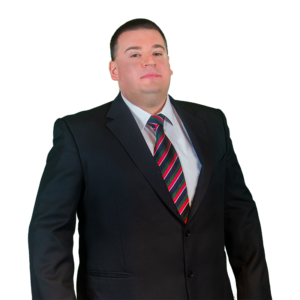Hello Mr. Bianco. Please tell us with whom do we have the pleasure?
 My name is Mirco Bianco. I studied Computer Engineering at the University of Genova and I also have a Ph.D. in Computer Science.
My name is Mirco Bianco. I studied Computer Engineering at the University of Genova and I also have a Ph.D. in Computer Science.
In 2010, I started working at Metroconsult and in 2015 and in 2019 respectively, I became an Italian and European Patent attorney.
I also, recently, obtained the approval to act in front of the forthcoming Unified Patent Court as a professional representative, which means I will be able to start full proceedings in front of this very specialized Court for patents.
In your opinion, how does protecting software differ from protecting other inventions?
First of all, please let me highlight that software as such cannot be protected by a patent. Softwares can be protected by copyright or other type of rights, which however are very limited and extremely difficult to enforce.
Patents instead can be used to protect what we call “Computer Implemented Inventions – (CIIs)”. CIIs are inventions which provide technical solutions comprising any kind of computing mean for solving technical problems. For instance, if you develop a method for encoding or decoding signals between a transmitter and a receiver, this would be a Computer Implemented Invention that can be protected by a patent. However, if you develop something like Excel or Word, which is used for improving the performance and productivity in your office, this is not a solution for a technical problem, but rather for a business problem and can therefore not be protected by a patent. This difference is extremely important when trying to protect a software or for deciding, whether you want to protect the invention by copyright, which is very limited, or by one or more patents.
Protecting Computer Implemented Inventions requires a more functional description, compared to other types of inventions such as mechanical ones. In mechanical inventions, you might have to define the structure of something, while for CII you must describe the function it performs; for instance, a CPU which is performing task A, B, and C. For this reason, when you decide to draft a patent application relating to a Computer Implemented Invention, programming skills might be very useful because they give you an idea of which part of the system performs which task, and how the device carries out the overall substantial operation.
 What do you have to pay attention to when protecting a software, or better a Computer Implemented Invention?
What do you have to pay attention to when protecting a software, or better a Computer Implemented Invention?
When an inventor contacts me asking for patent protection, usually he assessed that his invention represents a method for doing business. For instance, to increase productivity or to perform better and more efficiently a certain task. Unfortunately, business methods are not patentable, just like softwares, as they cannot be considered as an invention by the Italian and European legislations, and largely worldwide. My main task is to recognize these situations and draft a patent application, that does not fall within this impediment.
Firstly, when you have to draft a patent application relating to Computer Implemented Invention, it is crucial to recognize the technical problem; what is the problem that this invention solves? After that you can start drafting the patent application in all its parts: the claims, the drawings, and the description.
Technical problems are different from business problems, as technical problems are usually solved by engineers or researchers working in the industry or in R&D and deserve patent protection, while business problems are solved by managers and are not patentable.
What is your favorite part of working as a Patent attorney?
Well, of course, my favorite part of being a patent attorney is informing clients that their patent has been granted, delivering therefore a very solid intangible asset on which the company can build its business growth.
A patent is a fundamental asset for a company and has a strong strategic value. It can not only differentiate the company’s products from competitors, but it can also unlock access to credit and generate additional revenue for instance through licensing activities.
What is your most recent proudest achievement?
My proudest achievement was obtaining the grant for a Standard Essential Patent. It was a patent for an Italian company and it was very challenging to obtain. A Standard Essential Patent (SEP) is a very valuable patent for a company because it becomes infringed anytime a device complying to a particular standard is produced. For instance, if you have a SEP for a 5G telecommunication network (5G standard), all devices using that standardized technology must have license to use the invention protected by your patent.
Thank you very much for your time today and all the valuable insights into Software Patent protection.
This interview is done by Emil Abseher, Helena Ehrlich, Lise Emanuelle Geahchan, Elsa Laziamond, and Jakob Roeckl – Bachelor students at the ESCP Business School – as part of their Collective Project.


 What do you have to pay attention to when protecting a software, or better a Computer Implemented Invention?
What do you have to pay attention to when protecting a software, or better a Computer Implemented Invention?